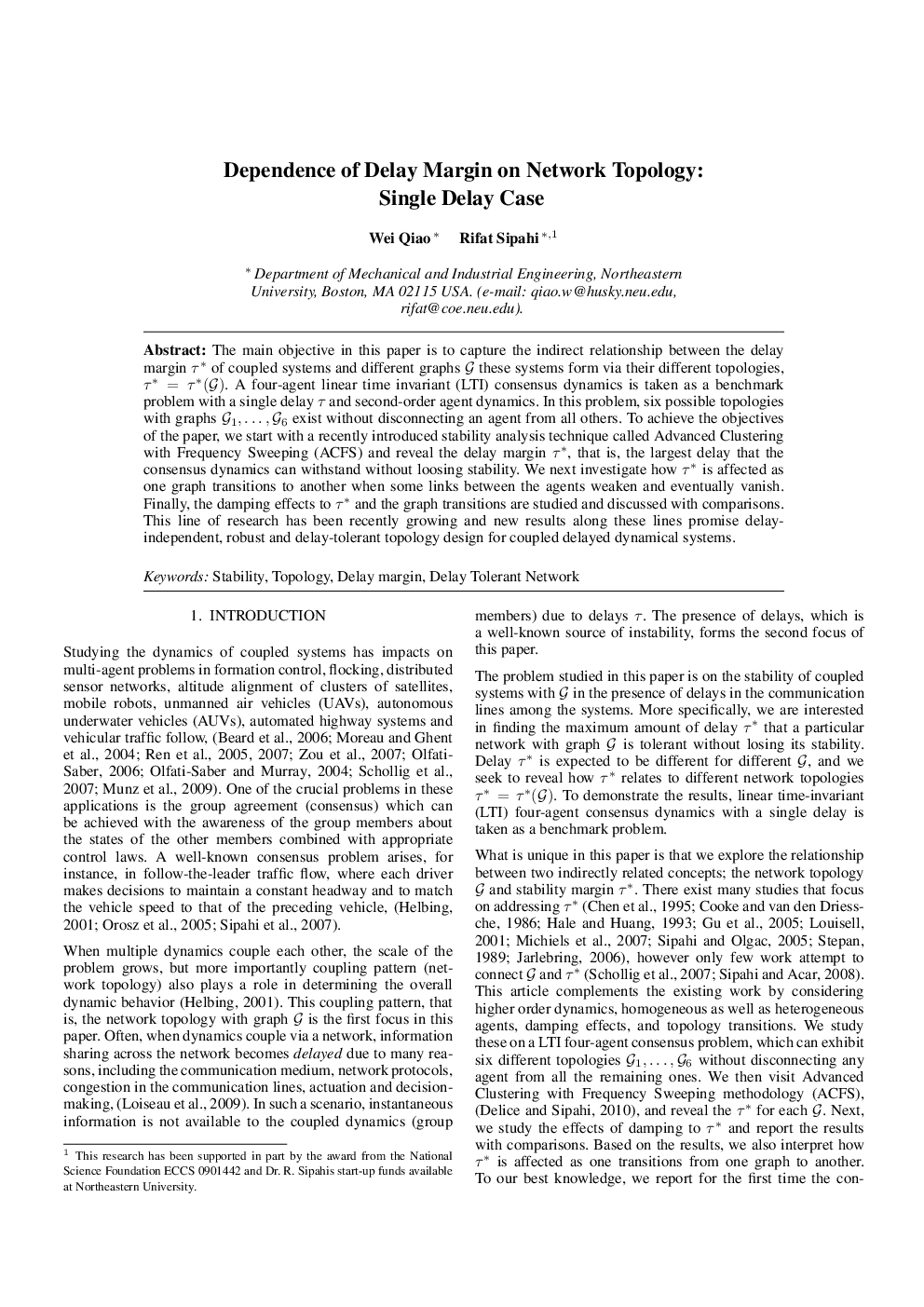| Article ID | Journal | Published Year | Pages | File Type |
|---|---|---|---|---|
| 720632 | IFAC Proceedings Volumes | 2010 | 6 Pages |
The main objective in this paper is to capture the indirect relationship between the delay margin T* of coupled systems and different graphs G these systems form via their different topologies, T* = T*(G). A four-agent linear time invariant (LTI) consensus dynamics is taken as a benchmark problem with a single delay T and second-order agent dynamics. In this problem, six possible topologies with graphs G1, …, G6 exist without disconnecting an agent from all others. To achieve the objectives of the paper, we start with a recently introduced stability analysis technique called Advanced Clustering with Frequency Sweeping (ACFS) and reveal the delay margin T*, that is, the largest delay that the consensus dynamics can withstand without loosing stability. We next investigate how T* is affected as one graph transitions to another when some links between the agents weaken and eventually vanish. Finally, the damping effects to T* and the graph transitions are studied and discussed with comparisons. This line of research has been recently growing and new results along these lines promise delay-independent, robust and delay-tolerant topology design for coupled delayed dynamical systems.
